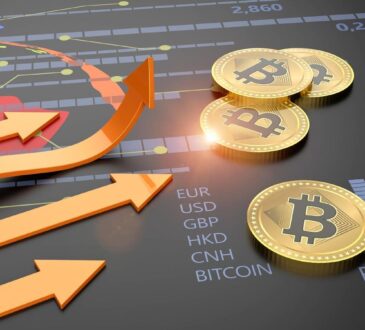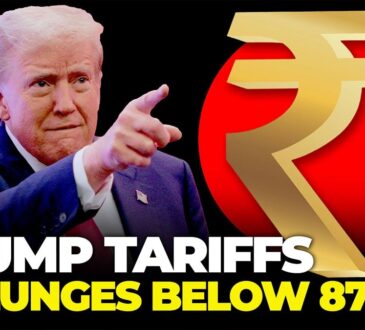Rupee plunges to 87.29 against dollar: What led to the fall, what its impact could be | Explained News
The Indian rupee plunged below the 87 level to an all-time low of 87.29 per dollar on Monday (February 3) as the dollar index surged more than a per cent after US President Donald Trump imposed tariffs on Canada, Mexico and China that triggered fears of a broad global trade war.
The dollar index rose 1.24 per cent to trade at Rs 109.84 per cent. The dollar index is a measure of the value of the US dollar relative to a basket of six foreign currencies. The domestic currency had settled at 86.62 against the US dollar on Friday.
Why has rupee fallen today?
Trump imposed 25 per cent tariffs on imports from Mexico and Canada and 10 per cent on imports from China. Tariffs on energy imports from Canada would be lower, at 10 per cent. Canada retaliated by imposing 25 per cent tariffs on US imports and Mexico is mostly likely to announce retaliatory tariffs as well. China has said it might initiate proceedings at the World Trade Organisation (WTO). The new measures by the US are likely to trigger a global trade war in the coming days, analysts said.
The main driver of the rupee’s depreciation is the strengthening of the US dollar index (approaching 110), which has been bolstered by robust US jobs data and higher interest rates expectations, financial services company Angel One said in a report.
Dollar forward positions have also lined up as rising treasury yields continue to be attractive. Rising dollar positions refer to an increase in the value of outstanding forward contracts that investors or companies have entered into to buy or sell dollars at a future date. The US–German 10-year yield spread has also risen to a five-year high of 2.15 per cent.
The report further said that Long dollar positions amid ongoing risk off and a pro-US sentiment signals that dollar may remain elevated in the current quarter. Long dollar position is a trading strategy that indicates an expectation of the US dollar appreciating, relative to other currencies. In short, investors and companies are building forward positions in the dollar, expecting further gains in the currency.
FII sales put pressure
Foreign institutional investors (FIIs) have been net sellers in the third quarter of FY25 to the tune of US $11 billion, adding further pressure on the rupee. Further, a widening trade deficit ($188 billion during year till date in FY25 and expected to grow 18 per cent over FY24) has put downward pressure on the rupee, which has depreciated 3.6 per cent in past 10 months.
Story continues below this ad
The RBI sold forex reserves at an average of $ 3.3 billion in past seven weeks, marking a more measured approach to intervention.
What could be the likely impact of a falling rupee?
The weakening rupee has both positive and negative impacts on the Indian economy. A weaker rupee makes imports, especially crude oil, more expensive, leading to higher production costs and fuelling inflation. “A weaker rupee exacerbates inflation as imports get costlier. The share of imported inflation in the overall basket has been consistently increasing,” Angel One said in a report.
Indian companies with foreign debt face higher costs to service their loans, straining corporate balance sheets and hindering investment. Higher import costs and reduced purchasing power erode consumer sentiment and affect economic growth. A weakening rupee can lead to capital flight and a decline in foreign direct investment (FDI) inflows.
On the positive side, a weaker rupee makes Indian exports more competitive in the global market, boosting export earnings, especially for industries like IT. For Indians living abroad, a weaker rupee means their remittances can go up further in India, benefiting the economy, especially in regions reliant on remittances.
Story continues below this ad
However, export-oriented sectors such as IT and pharma are expected to benefit and markets have shown a run up in this space, it said.
Dilemma for the RBI
The RBI has to choose its battles between growth, inflation and currency. “Conjecture is RBI likes free flow adjustment of the rupee to prevailing macros, but can India actually afford it? We think there will be near term pressures, at 88 the rupee will depreciate by 6.3 per cent, which is high but not unprecedented. February rate cut by the RBI is still a high probability event, especially if the currency is not the most important concern,” said an analyst.
The RBI’s monetary policy panel is meeting later this week to take stock of the situation.






